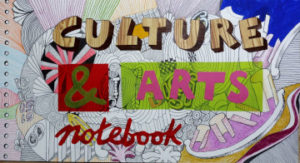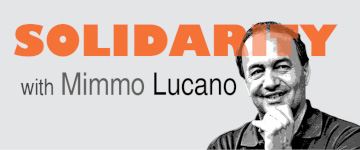From sociology and communication, inserted in the recent history of Peru, a subject of analysis is how the use of stereotypes about women in advertising has changed. Today it is already possible to see advertisements where Peruvian women are vindicated as the main actors in social dynamics, as leaders, empowering motherhood, the family and values. This seems important to me because there are still deficient advertising pieces.
However, this analysis is in retrospect, and it is possible that there are discrepancies, in any case the dialogue is open. For many years, the image of women was used as a “sexual object” in most Peruvian advertising campaigns, resulting in the dissemination of denigrating stereotypes, false conceptions, limited vision and the possibility of these conceptions spreading massively and becoming impregnated in the collective unconscious of society.
One of the biggest problems that persists is the use of the image of women as sexual objects, with the aim of generating “interest” – behavioural marketing strategy – focused on the male public, taking advantage of the existing machismo in Peruvian society.
Advertising agencies, advertising creatives, scriptwriters, producers and the clients themselves who commission the campaigns, sometimes choose to use women as a central aspect to attract the attention of the products.
The use of the image of women as sexual objects in Peruvian advertising generates the diffusion of a stereotype, creating confusion in society and the generation of a “false value”. The problem is: advertising, by using the denigrating image of women as sexual objects, is spreading negative models in society, fuelling psychological violence against women.
The use of the image of women in Peruvian advertising is a field that has not yet been studied sufficiently well in Peru, and is even a self-criticism for sociology, although there are excellent advances in lines of research. There is bibliography from the point of view of jurisprudence, legislation, as well as academic research on the problems of women worldwide and in Peru. With regard to the role of women in advertising, specific cases of complaints about inappropriate advertising in Peru have been studied.
We can cite for example Marisol Fernández Revoredo (2018), author of “La imagen de la mujer en la publicidad comercial: Dignidad vs. Libertad de expresión comercial” (Pontificia Universidad Católica del Perú).
Also very relevant is the approach of Genara Castillo (2009) in “Estudio sobre la imagen de la mujer peruana en la publicidad gráfica del suplemento sabatino Somos“, in Revista de Comunicación de la Universidad de Piura.
Also, in Spain, we have the study carried out in 2014: “La imagen de la mujer en la publicidad. Estudio de las resoluciones emitidas por autocontrol (Asociación para la Autorregulación de la Comunicación Comercial)”, as part of her doctoral thesis by María Valle Nacarino in the Faculty of Documentation and Communication Sciences Audiovisual Communication Degree at the University of Extremadura.
From a legal and ethical point of view, there is a good analysis by Marisol Fernández Revoredo (2018), lecturer at the Pontificia Universidad Católica del Perú, entitled “The image of women in commercial advertising: Dignity vs. freedom of commercial expression“.
Within advertising, women have been one of the most represented elements, either to accompany the product or to explain its use, but the image of women, like advertising, has also evolved over the years. The woman we see on the screen today is not the same woman we saw forty years ago, or even twenty years ago.
There are more and more campaigns where we can see a hard-working, self-sufficient and independent woman, who is the owner of her life and who chooses her destiny (Meléndez and Carrillo, 2010), showing her as a human being with great potential, values and strengths. Those “sexist” advertisements are a thing of the past.
However, advertising that uses clichés and stereotypes, which in many cases are related to gender prejudices present in our society, is questionable.
In general terms, the image of women has improved in recent years (Sánchez Aranda et al., 2004), an aspect that has been influenced by all the laws and restrictions regarding the image of women in advertising. These laws aim, among other things, to protect consumers from the indiscriminate bombardment of negative advertising.
In addition, there are laws and restrictions that exist within the legal framework, either in the Political Constitution of Peru, the Peruvian Penal Code, as well as the advertising industry itself created in Peru and bodies such as Indecopi or the Peruvian Association of Consumer Rights, as it exists in other countries in North America and Europe, in order to monitor the work that advertisers do in the service of advertisers and media.
The image of women in advertising has improved a lot in recent years (García and Martínez, 2008), due to pressure from society on the issue of gender equality and respect for women (Meléndez and Carrillo, 2010). Every day we see more and more often, in advertising, a hard-working, independent and self-sufficient woman, something that was unthinkable a few years ago.
Another of the reasons that has helped this improvement is the regulation of advertising with the laws that are constantly being passed and which help to restrict the misuse of advertising to a large extent.
It is necessary to revalue women in Peruvian advertising, replacing the “sexist” vision with an integral vision of their human values, their identity and dignity, together with the role of motherhood, their creativity and new social roles as part of gender equality.
It is necessary to make women’s issues visible in Peru, because women continue to be victims of abuse and social violence. Femicide is a serious problem, and these abuses in Peru are worrying. In 2019, around 250 cases were registered. So far in 2022, the situation is dramatic.
Another issue is social and labour marginalisation: despite the fact that the government has been enacting laws to favour the inclusion of women, they still suffer marginalisation and exclusion. The majority of public positions in state entities and private companies are held by men. Moreover, salary levels indicate that women earn less than men.
Women are pigeonholed as sexual objects. Proof of this is sexual harassment in the street and in social networks.
A very serious case, which is being investigated by the Peruvian National Police, is human trafficking. Thousands of women, especially teenagers, are victims of trafficking, kidnapped and forced into prostitution by mafias and criminal organisations.
According to the authors cited, the most denounced advertising related to the image of women is that broadcast on television, especially related to: alcoholic beverages (sexist and denigrating image); household appliances (exclusive role of “housewife”, subject to the will of men); beauty products (role of women as aesthetic objects), and products for men (role of women as sexual and dependent objects).
As we pointed out in the introduction, it is necessary to delve deeper into the critical analysis of the problem of the misuse of women’s image in Peruvian advertising. We believe that this is very important, as Castillo (2009) points out, “because in this way society would become aware of its level of maturity in its valuations of women and it would be very gratifying for the consistency of social life”.
“Advertising agencies, the different media and the companies that pay for these advertisements have a special responsibility in this task, since advertising messages have real effects on the members of a society”.
We believe that this article can motivate future lines of research. This study is basic and elementary within the rich thematic field of the image of Peruvian women in advertising. From this point onwards, it is possible to continue with different research studies that delve into the study of the image of women in different social spheres, in their values and/or lifestyles, as well as in different occupational or professional fields.
It would also be possible to study the relationship between fashion and the valuation of Peruvian women in their most significant stages, such as adolescence and youth, identifying the graphic media they are most familiar with and the image projected in them.












